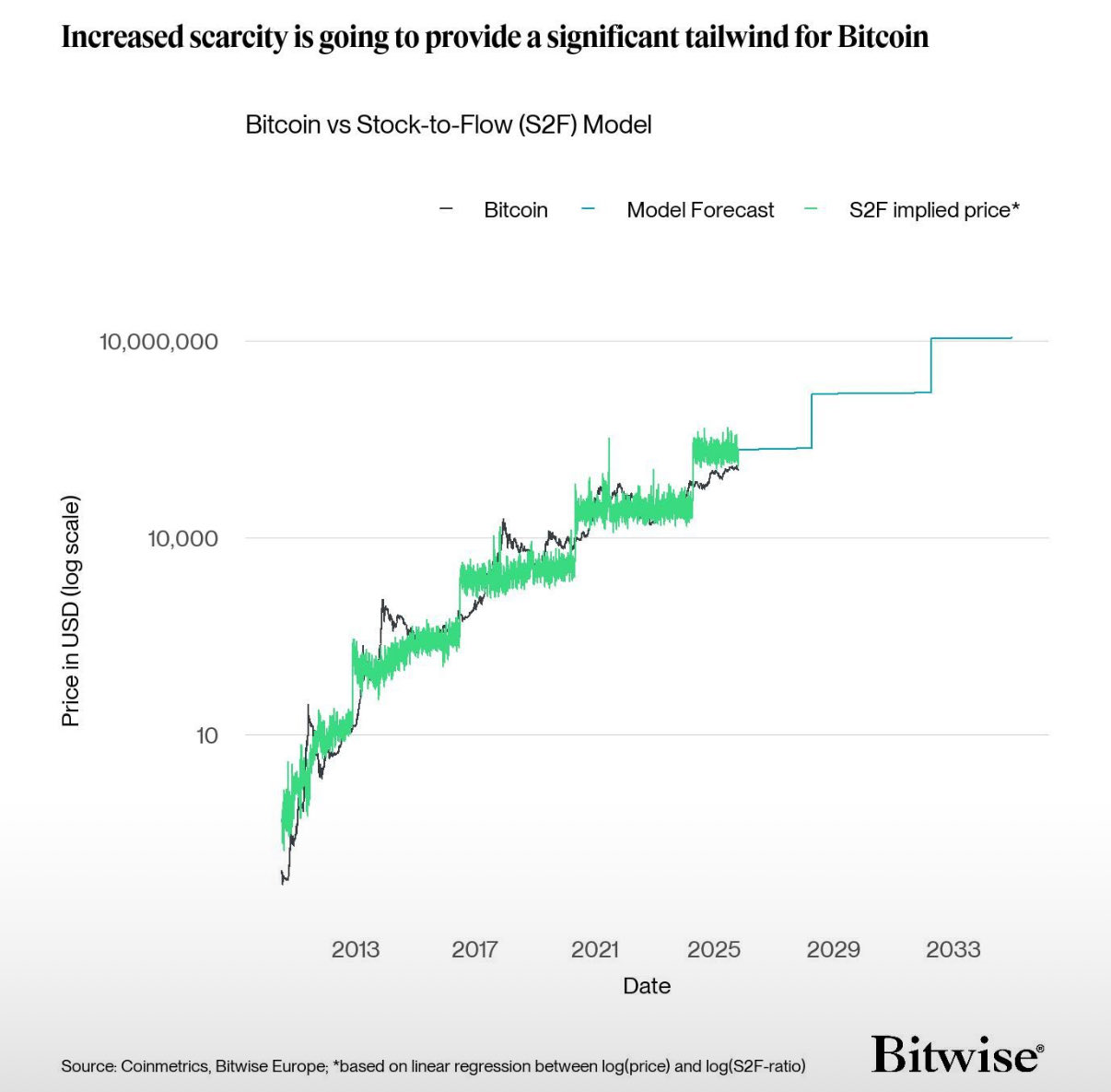The Bitcoin Stock-to-Flow model forecasts a peak price of $222,000 this cycle but overlooks demand factors like institutional investments, according to Bitwise analyst André Dragosch. Investors should approach it cautiously as it focuses solely on supply halvings without considering broader market dynamics.
-
The model relies on Bitcoin halvings that halve new supply every four years, predicting scarcity-driven price surges.
-
Institutional demand through ETPs and treasury holdings now exceeds supply reductions by over seven times.
-
Exchange-traded products have established a price floor above $100,000, supporting Bitcoin amid market maturity.
Discover why the Bitcoin Stock-to-Flow model may fall short in forecasting prices amid rising institutional demand. Explore analyst insights and price predictions for 2025—stay informed on BTC’s trajectory today.
What is the Bitcoin Stock-to-Flow Model?
The Bitcoin Stock-to-Flow model is a popular valuation framework that compares Bitcoin’s existing supply, or “stock,” to its annual production rate, or “flow,” to predict future prices based on scarcity. Developed by analyst PlanB, it emphasizes Bitcoin’s programmed halvings, which occur approximately every four years and reduce the issuance of new BTC by half, mimicking the scarcity of precious metals like gold. However, experts like André Dragosch from Bitwise caution that this model overlooks critical demand-side elements, such as institutional adoption, potentially leading to inaccurate forecasts.

While the model has gained traction for its historical alignment with price cycles, its limitations become evident in today’s evolved market. Institutional inflows via exchange-traded products (ETPs) and corporate treasury allocations have significantly bolstered Bitcoin’s value, creating a robust support level that the supply-focused S2F approach does not fully capture.
How Does Institutional Demand Impact Bitcoin’s Price Beyond the Stock-to-Flow Model?
Institutional demand has transformed Bitcoin’s market landscape, surpassing the effects of supply reductions from recent halvings. André Dragosch, European head of research at Bitwise, notes that demand from Bitcoin ETPs and treasury holdings outweighs the annualized supply cut from the latest halving by more than seven times. This influx provides a stable price floor, keeping BTC above $100,000 even during volatility.
Exchange-traded funds and similar vehicles have democratized access to Bitcoin for traditional investors, channeling billions into the ecosystem. For instance, spot Bitcoin ETFs approved in various jurisdictions have seen consistent inflows, stabilizing prices and reducing downside risks. Dragosch emphasizes that these factors create a demand-driven momentum that the S2F model, with its exclusive focus on halvings, fails to quantify effectively.
Analysts highlight that this institutional participation signals Bitcoin’s maturation as an asset class. Data from on-chain metrics shows accumulation by large holders, often institutions, during dips, which counters the scarcity narrative alone. As global economic uncertainties persist, such as inflation concerns, Bitcoin’s role as a hedge attracts more capital, amplifying price resilience beyond what supply models predict.
Moreover, the integration of Bitcoin into corporate balance sheets, exemplified by companies like MicroStrategy, underscores this trend. These entities view BTC as a superior store of value, driving sustained buying pressure. Experts agree that while halvings remain a foundational event, the interplay of supply and demand now requires a more holistic analytical approach for accurate forecasting.
Frequently Asked Questions
What Are the Limitations of the Bitcoin Stock-to-Flow Model for Price Prediction?
The Bitcoin Stock-to-Flow model primarily analyzes supply dynamics through halvings but ignores demand influences like institutional investments and macroeconomic shifts. Bitwise’s André Dragosch points out that current ETP inflows dwarf halving effects, making the model less reliable for this cycle’s $222,000 peak forecast. Investors should complement it with demand metrics for better insights.
Can Bitcoin Reach $200,000 in 2025 Despite S2F Model Concerns?
Yes, Bitcoin could hit $200,000 by the end of 2025, driven by institutional adoption and liquidity trends, according to Geoff Kendrick of Standard Chartered. While the October flash crash dipped prices below $104,000, it may offer a buying opportunity as market recovery builds on strong fundamentals beyond just supply halvings.
How Might M2 Money Supply Growth Affect Bitcoin Prices?
An expanding M2 money supply, which measures global U.S. dollar liquidity, often correlates with asset price rallies, including Bitcoin. Analysts forecast BTC could reach $500,000 by 2026 if this trend continues, as excess liquidity seeks high-return assets. This demand catalyst complements institutional flows but highlights the S2F model’s supply-only focus as outdated.
What Do Leading Analysts Say About Bitcoin’s 2025 Price Potential?
Opinions vary: Geoff Kendrick from Standard Chartered sees $200,000 feasible, while Tom Lee of FundStrat warns of possible 50% drawdowns despite adoption. Mike Novogratz of Galaxy Digital deems $250,000 unlikely without extraordinary events, urging caution amid maturing market structures.
Key Takeaways
- Stock-to-Flow Limitations: The model excels in scarcity analysis but underestimates institutional demand, which now dominates price action per Bitwise research.
- Institutional Support: ETPs and treasury holdings create a $100,000+ floor, reducing volatility and enhancing Bitcoin’s appeal as a mature asset.
- Diverse Forecasts: From $200,000 to $500,000 by 2026, predictions hinge on liquidity and adoption—monitor M2 growth for bullish signals.
Conclusion
The Bitcoin Stock-to-Flow model offers valuable insights into supply-driven scarcity but falls short in a demand-heavy landscape shaped by institutional investors and economic liquidity. As analysts like André Dragosch and Geoff Kendrick highlight, factors such as ETP inflows and M2 expansion could propel BTC toward $200,000 or higher in 2025, even amid debates on peak potential. With market maturity evident, Bitcoin’s trajectory remains promising—investors are encouraged to diversify analyses and stay attuned to evolving dynamics for informed decisions in this pivotal cycle.





